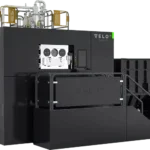
A key proponent for space capabilities on the House Armed Services Committee (HASC) is pushing for the Pentagon to more rapidly go after space-based missile defense capabilities required to match peer competitors’ increasing investment in hypersonic weapons. Rep. Jim Cooper (D-Tenn.) told attendees at a Thursday Defense One event there’s bipartisan HASC support for the Pentagon to continue exploring high-energy directed energy weapons and networked satellite systems required to take down next-generation missile threats. “We are not rushing to militarize…

 By
By 











